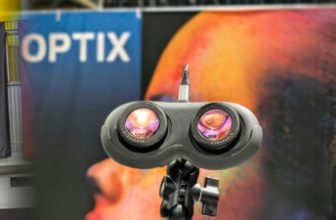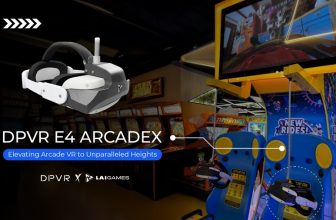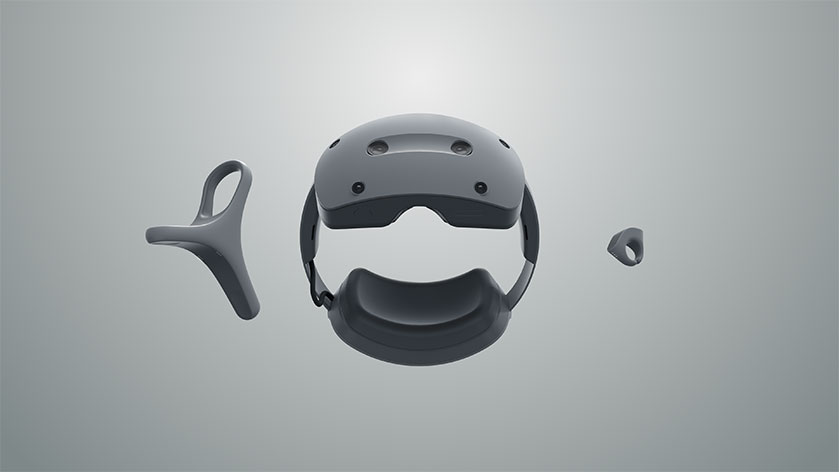
Sony Corporation Today, an announcement has been made regarding the creation of a cutting-edge system for developing immersive spatial content. This system includes an XR head-mounted display with top-notch 4K OLED Microdisplays, video pass-through capability, and unique rendering technology. Additionally, it features controllers that are designed for seamless interaction with 3D objects.
Sony states that their system is designed to assist creators in advanced 3D content creation. The company intends to partner with developers of diverse 3D production software, spanning entertainment and industrial design sectors.
At the time of its release, Sony has formed an exclusive partnership with Siemens, a prominent player in the field of industrial technology. Together, they aim to present a fresh approach to immersive design and cooperative product engineering by utilizing software from the Siemens Xcelerator open digital business platform.
Cedrik Neike, CEO of Siemens Digital Industries and Member of the Managing Board of Siemens AG, announced that Siemens and Sony are collaborating to support immersive engineering, an essential component for the industrial metaverse. This partnership aims to create a space where individuals can experience the principles of physics without limitations of time, ultimately enhancing the productivity and collaboration of our customers.
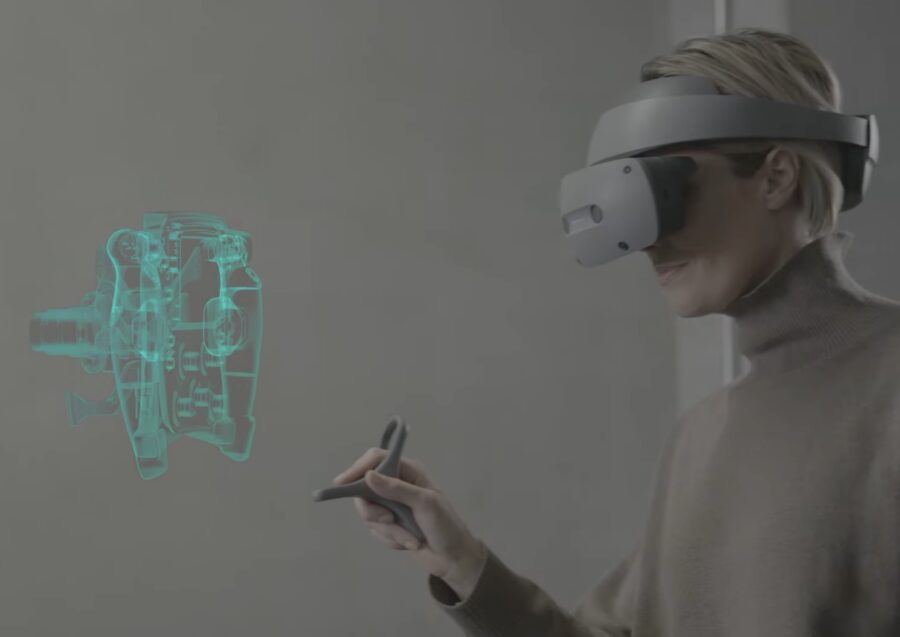
Sony announced that the system will be released at a later date in 2024. They mentioned that additional information such as specifications, launch dates, availability in different regions, pricing, sales channels, and software compatibility will be revealed by Sony and its partners. However, the company did not provide specific details regarding these aspects when this supplementary information will be made available.
Sony claims that their new system for creating spatial content will allow for the realistic rendering of textures on 3D objects and facial expressions on human characters in real-time and high-definition. Along with the ability to see video footage overlaid on the real world and spatial recognition using a total of six cameras and sensors, the system also includes two new controllers.
Sony offers two controllers for their virtual reality system. One is called the “ring controller” and it allows users to manipulate objects in virtual space. The other is called the “pointing controller” and it enables precise pointing for creators to work with real-scale 3D models in virtual space while wearing the head-mounted display. Sony also mentions that integration with third-party 3D creation applications will allow for remote, real-time review and collaboration.
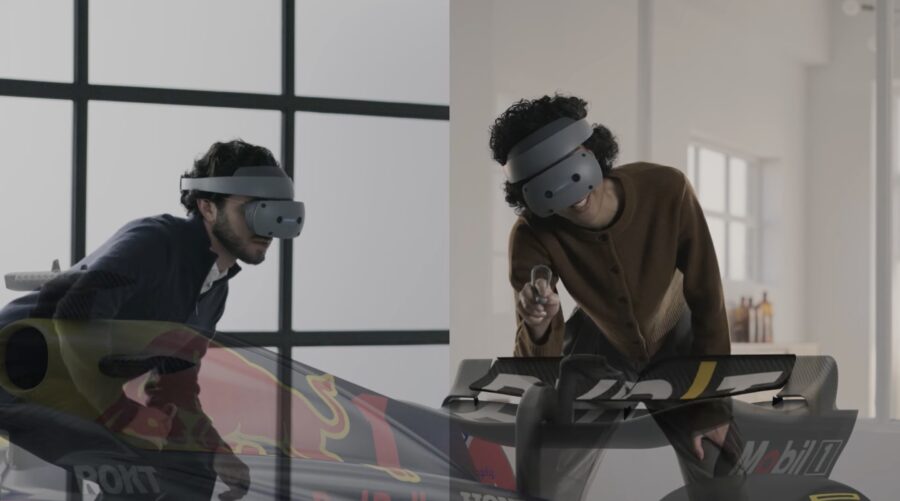
The HMD will utilize the recently announced Snapdragon XR2+ Gen 2 Platform to unlock the power of the device’s 4K OLED Microdisplays. Additionally, the chipset will provide user and space tracking for seamless XR experiences.
Said Bakadir, Senior Director, Product Management of Qualcomm Technologies, Inc., stated: “It’s exciting to see Sony enter the enterprise space with their spatial content creation system and utilize Snapdragon XR technologies to unleash more realistic, detailed, and precise Mixed Reality (MR)/VR experiences that will help developers and creators push forward an even more immersive future.”
Sony has previously released technologies that complement spatial content creation and facilitate use of 3D CG in various creative fields, including its mobile motion capture system mocopi that enables full-body motion tracking, or its Spatial Reality DisplaysSony has introduced a new system that allows for the creation of realistic 3D content without the use of special glasses or VR headsets. By collaborating with software developers, Sony aims to enhance the creative experiences of spatial content creators by breaking the barriers between physical and virtual realms.
Main Features
Sony states that the head-mounted display is furnished with high-quality 1.3-type OLED Microdisplays that have a 4K resolution and a wide color gamut, covering up to 96% of DCI-P3. This feature enables the display to accurately depict the intricate details and lifelike appearance of 3D object textures and human facial expressions.
Furthermore, with the implementation of split rendering, the system effectively divides the task of rendering between computers and the Head-Mounted Display (HMD). This allows for a consistent and high-quality rendering of extensive 3D models.
As mentioned earlier, the system is equipped with two controllers – one for manipulating objects called the ring controller, and another for precise and stable pointing in virtual spaces known as the pointing controller. The HMD has a design element that enables the wearer to effortlessly transition between physical and virtual spaces with a flip-up mechanism.
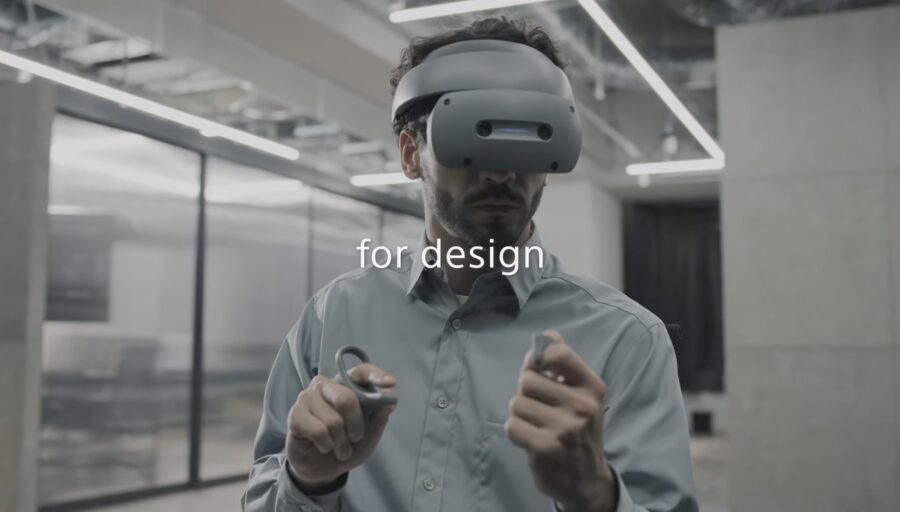
Sony added that it is seeking to collaborate with various 3D production software developers, in both the entertainment and industrial design fields. Through its partnership with Siemens, the two companies will work to bring innovative immersive engineering capabilities to the manufacturing industry via integration with Siemens’ new NX Immersive Designer software, a product engineering solution from the Siemens Xcelerator portfolio of industry software.




